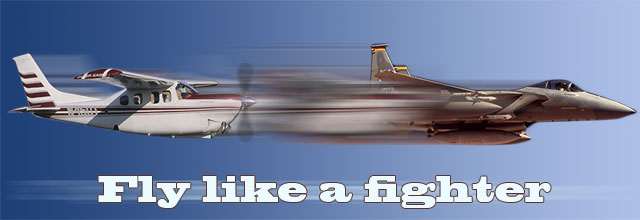
I hadn’t been in Germany very long when I was assigned to lead a four-ship formation of F-15s for a night aerial refueling mission followed by intercept training. I was still learning the local frequencies and airspace, and the extra fun was that we did not have any tactical controllers that night to assist with the joinup with the tanker.
The clouds were solid from 4,000 feet to above 26,000 feet, so I joined my flight up into close formation under the ceiling. The tanker would be in the 20,000- to 22,000-foot altitude block. With them close aboard, at night, and in the soup, I was very cognizant of all of my control inputs to give them a smooth platform to follow. I also realized that I wouldn’t have any assistance from my wingmen’s radars to find the tanker. It was all on me.
As we neared level-off, air traffic control cleared us to the tanker track and off to tactical frequency. As I pointed my radar in the general direction of the track, I saw six targets. My guess was that two of them were tankers heading to adjacent tracks, and the rest were airline traffic. I started locking on to each one to determine their altitude, airspeed, and heading and was able to eliminate two of them cruising above FL310. Radio contact with my tanker clued me into his heading, which then narrowed the search to two of the blips. Finally, using range from the air-to-air TACAN, I found our tanker. It was at FL 215, so I made sure we were at FL205 for the initial part of the rejoin. We were generally heading toward each other, and the tanker instructed me to call his left turn.
The timing was critical. If I turned too early, they would end up too far in front of us; too late, and we would end up in front of them. The tanker turned left, and I initially turned right then settled directly behind at a mile by the time the tanker rolled out of the turn—except this was the first time where I hadn’t seen the tanker from a mile behind. I had 40 knots of overtake, which I reduced to 30 as I climbed to FL210—now 500 feet below the tanker. At a half mile in trail I still couldn’t see the tanker’s lights. I reduced to 20 knots of overtake and inched forward. Two thousand feet in trail….1,000 feet….500 feet—finally I could start to see the tanker’s lights, so I climbed to just below its altitude. At 200 feet in trail I cleared my wingmen to the tanker’s wings. I learned in the debrief that they initially didn’t want to leave my wing because, looking sideways at me in close formation, they still hadn’t seen the tanker.
As much as I was sweating getting us to the tanker in one piece, the difficult task had to be with the wingmen to hang on for the 20 minutes from joinup on me to joinup on the tanker. So if you ever need to fly a really smooth, stable, and precise aircraft, imagine that you are flying at night, in the weather, with three aircraft in close formation on your wing.



